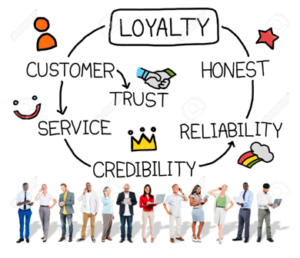What satisfaction to see the face of a loved one to whom you are doing a favor light up, to make those around you laugh, or to watch a child open the Christmas present he has been waiting for weeks? It's normal, we all want to arouse positive emotions around us.
The UX designer is lucky enough to be able to do this through his work, by seeking to provoke pleasure in the user who navigates on the interface he has created. Indeed, as mentioned by Aaron Walter, it is important for a site not only to be reliable and usable, but also pleasant.
The user therefore expects it to:
- works properly (quickly and without technical problems)
- allow him to do what he expected
- be fun to use
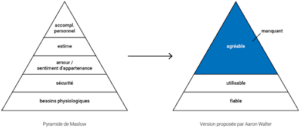
Emotional design has also developed in recent years, advocating the importance of strengthening the link between the interface and the user through the use of emotions. And for good reason, an emotion depending on whether it is positive or negative will induce a different behavior of the user towards the interface. Alongside emotional design, ethical design emerges, encouraging us not to lose sight of the objective of positioning Man at the center, and thus to be vigilant about techniques for manipulating emotions.
How to use the emotions of the user to optimize his user experience without leading him to a goal he did not have and which does not benefit him?
# Hormones at work in our emotions
At the time when the search for security and survival were the ultimate goals of Man, the secretion of certain hormones allowed him to optimize his resources. Indeed, these so-called “happiness” hormones came into play as soon as Man undertook an action or satisfied a need, giving him pleasant sensations and emotions. Over the years, the notion of security has evolved: our primary needs being generally satisfied, a quest to satisfy more secondary needs has begun. At the level of the organism, the so-called happiness hormones thus continue to exert their influence in the same way.
Focus on happiness hormones:
We usually name 4 hormones of happiness: dopamine, oxytonin, serotonin and endorphins. All have the effect of bringing out positive emotions in the individual:
- Dopamine is the hormone that motivates us, the one that makes us want to succeed in achieving the goals we set for ourselves. It is produced throughout an action: it is not the achievement of the objective that matters, but the attempt.
- Oxytonin is the hormone that invites us to seek and maintain social ties by giving us the feeling of confidence in these situations.
- Serotonin gives us feelings of self-confidence and well-being, it strengthens our ego thanks to a virtuous circle: the more we feel respected and safe, the more serotonin we secrete.
- Endorphins are released in pain-generating situations to conceal the pain.
Now that you've brought back old memories from your science classes, you may be wondering: what does this have to do with UX?
We saw it in the introduction: an interface with a successful UX is, among other things, an interface offering a pleasant user experience. And who says pleasant, says positive emotion, therefore says secretion of the hormones of happiness. You follow me ?

Among these 4 hormones, the first 3 are at work in the interactions we have with our screens. And since the theory is nice, but the situation more telling, these examples on social networks should clarify all that:
- We release dopamine when we refresh our news feed looking for new information
- We release oxytocin when we exchange with other individuals on instant messaging
- We release serotonin when the post we published is re-shared, “liked” or commented positively.
# Emotions, UX research and UX/UI design
If our goal is to provide a pleasant and optimal user experience, we must therefore take an interest in behaviors and situations that allow the secretion of happiness hormones.
Different UX-Research tools can be used during user tests to assess the emotions aroused by interfaces. Among them, the questionnaire and the Facial Action Coding System are among the most popular.
As for questionnaires, there are many ways to probe the user on the perception he has of a site. We will cite here the Attrakdiff, which makes it possible to qualify the pragmatic character (does the site make it easy to achieve the objective, is it effective?) and the hedonic character (Does the site give me pleasure? ) of an interface.
Through 28 items, the user is led to position himself between two antonyms to define the site. This type of practice is subjective: the user decides on what he thinks he perceives or feels.
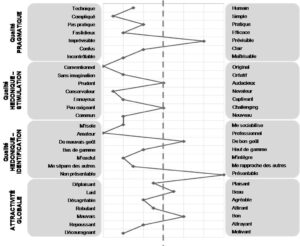
Means of collecting more objective emotions can be put in place. This is particularly the case of Facial Action Coding System, which encodes facial expressions. During a user test, we can capture these expressions with specific software and deduce what the site inspires as the first emotion(s) in the user.
Some scientists have even gone further by developing software that uses the eye tracking method: the size of the pupil, the gaze and the blinking properties of the eyes are all elements that make it possible to deduce a reaction index. emotional.
Other techniques can then make it possible to identify more precisely what arouses emotions (positive or negative) in the user, such as Thinking Aloud which aims to make him verbalize during the performance of a task.
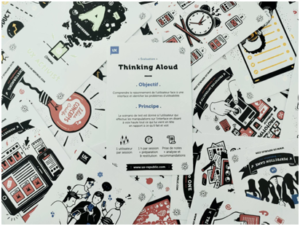
Both the content and the form of the interface may be affected: colors, shapes, typography, animations, editorial style, words, reassurance elements, respect for the user's mental schema, etc.
It has been shown that a successful reflection around these elements makes it possible to offer the user a more personalized relationship with the interface, thus increasing his commitment to the site and more generally his loyalty to the brand or service. Indeed, if the emotions felt are strong enough, this leads to the creation of a memory imprint and the user will return more easily to this site which has provided him with a pleasant browsing experience.
The UX researcher therefore has many tools at his disposal which, associated with user testing, allow him to deduce recommendations for optimizing an interface so that it generates positive emotions, reinforcing the user's adherence to the site, and thus leading it to an expected behavior.
# Ethical design: from the use of emotions to manipulation by emotions?
If we can, through design, push the user to behave in the way we expect, then what about ethics?
The individual makes the choice to remain on the interface or to click on certain places, however it is easily possible to influence him. Indeed, decision-making results from a set of factors, including emotions.
This is called emotional bias: when emotions affect behavior by distorting the objectivity of a situation.
The processing of information is then faulty and this generates cognitive biases, ie an error in decision-making or behavior. This is not necessarily negative: for example, writing an error message in red will allow the user to immediately associate the information with a problem, without necessarily having to read it.
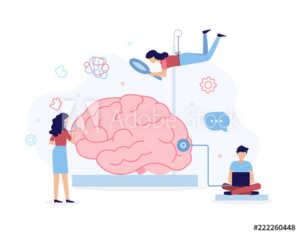
Using emotions is essential to promote your site or your brand: for example, if a user visually appreciates an interface, he will tend to evaluate the functionalities and other elements of the site on the basis of positive a priori.
This is called the halo effect. The reverse is also true. Because of this, it is also easy to deceive the user by exploiting their emotional flaws in order to better get them to do something that is not in their interest – in other words, to trap them.
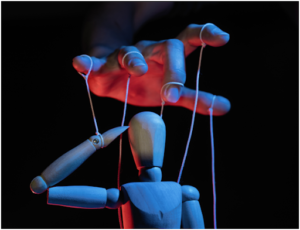
This phenomenon is linked to the use of Dark Patterns, translated as “questionable design element”. Using dark patterns means taking advantage of a human flaw: our cognitive biases. For example, what need does spending time on Facebook or Instagram meet? This does not meet a real user need but above all allows data to be collected.
The user is led to engage on these platforms: he publishes, he receives approval from those close to him (rewards), he stores photos and files through conversations, he even has a space for "memories" allowing you to remember what he has published or what his friends have published on his space on the same day in previous years...
In short, this sends him back sequences of his ideal identity, and thus strengthens his relationship with the interface. This is where the release of dopamine, oxytonin and serotonin come into play: the pleasure of discussing, of maintaining social relations, of receiving social approval through “likes” or shares, creation of a feeling of trust and attachment…
A company has even made it its trademark: Dopamine Labs, which aims to create interfaces aimed at making users addicted.

# How to fight?
Is the user really helpless in the face of this? Not necessarily: everyone has free will and the possibility of countering certain attempts to use their emotions. We can cite in particular the fact of switching to "dark mode" to avoid colors that increase the attractiveness of sites, muting his phone / computer or even deleting all notifications so as not to be distracted when he has not decided of himself to use a screen, read all the information on the screen carefully so as not to miss any information...
But all this involves costly work, especially when it comes to fighting against automatisms that push us to choose the easy way to optimize our energy.
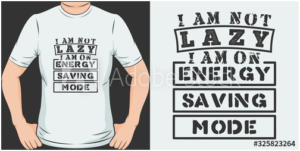
It is therefore everyone's responsibility to consider ethics in the design of interactions between people and screens. Starting with those who design the interfaces.
How to position yourself as a design professional?
The ethical problems encountered in the digital world are increasingly denounced, and we can quickly find ourselves on the other side of the border, responding to an objective whose consequence is morally questionable. Indeed, it can be complicated to succeed in finding a way to maintain an ethical posture in the face of the economic imperatives of certain companies.
However, we must always keep in mind that by improving the user experience on a site, we can build user loyalty. Increasing the secretion of dopamine makes it possible to create habits in the user, whose navigation will be less and less costly on the interface. There is no harm in taking advantage of emotions, as long as it remains with the objective of satisfying the user.
It is therefore better to bet on the ethical design of a good user experience than on the use of dark patterns. Trapping its users means taking the risk that they will realize it and therefore increasing the chances that they will visit competing sites.
# Take away:
Let's continue to seek to always be as close as possible to what the user feels: his needs, his motivations, his expectations. Let's continue to seek to arouse beautiful emotions in him. But let's also continue to make sure that we study the user to produce something that will benefit him through simple and pleasant user journeys. The main thing is to always ask ourselves questions about all the possible consequences of our actions.
- At the start of each project: clarify the objective with all the players in the project team. Evangelize UX, convince that a good user experience is the real key to success.
- Throughout the project: Am I led to use the cognitive biases of users, and if so what do they have to gain? Do I maintain honesty and integrity with the user and myself? Am I acting in the interest of all, or failing that of the greatest number?
- For any recommendation issued: question the relevance for the user. How will this benefit him, how will this harm him?
- Never forget what drove us to practice this profession. We are the voices of users. We carry their needs, we work for them and place them at the center of our thoughts. So let's make sure that at the end of each of our projects, we can congratulate ourselves for having remained straight in our boots. We will only feel better about it, and our users too.
At UX Republic, the UX Research division offers you offers adapted to your needs to optimize, design or simply evaluate your site or application.
To discover them, it's this way (link: https://www.ux-republic.com/notre-offre/ux-research/).
Enjoy!
REFERENCES & MUST READ
- Designing for emotion (2011), Aaron Walter
- https://www.ux-republic.com/acteurs-de-lux-donald-a-norman/
- https://www.ux-republic.com/mike-monteiro-code-ethique-designer/
- https://www.ux-republic.com/petit-traite-de-manipulation-a-lattention-honnetes-designers/
- https://measuringbehavior.org/mb2008/individual_papers/FPS_eye_tracking/FPS_eye_tracking_deLemos.pdf
- https://uxdesign.cc/the-importance-of-neuroscience-in-the-user-experience-process-13a2d4fe5006
- https://uxdesign.cc/are-we-actually-designing-with-humans-in-mind-b2ff5d2410b
- https://blog-ux.com/design-emotionnel-et-marketing-emotionnel-comment-tirer-parti-des-emotions/
- https://newflux.fr/2017/10/25/connaissez-design-emotionnel/
- https://www.linkedin.com/pulse/designing-ux-neuroscience-how-trigger-4-main-brain-make-gonzalez
- http://theconversation.com/ce-quon-ne-vous-dit-pas-sur-les-reseaux-sociaux-87351
- http://www.eclaireursdelacom.fr/dark-patterns-ou-en-etes-vous/
- https://uxmind.eu/2015/04/09/evaluer-les-emotions/
- https://www.blogdumoderateur.com/ux-design-ethique-deontologie-realite-marche/
- https://mbamci.com/addicts-au-smartphone-cest-hormonal/
- https://www.designweek.co.uk/issues/9-15-march-2020/dark-patterns-design/
- https://designersethiques.org/ethics-by-design/
MUST WATCH:
- https://newflux.fr/2017/10/03/documentaire-lethique-design/
- https://www.youtube.com/watch?v=IahJWpRGbWE
Florine AUFFRAIT, UX Researcher @UX-Republic
UX/UI ECO-DESIGN # Paris
SMILE Paris
163 quay of Doctor Dervaux 92600 Asnières-sur-Seine
DESIGN THINKING: CREATING INNOVATION # Belgium
UX-REPUBLIC Belgium
12 avenue de Broqueville - 1150 Woluwe-Saint-Pierre
MANAGING AND MEASURING UX # Paris
SMILE Paris
163 quay of Doctor Dervaux 92600 Asnières-sur-Seine
DESIGN SPRINT: INITIATION & FACILITATION # Paris
SMILE Paris
163 quay of Doctor Dervaux 92600 Asnières-sur-Seine
UX-DESIGN: THE FUNDAMENTALS # Belgium
UX-REPUBLIC Belgium
12 avenue de Broqueville - 1150 Woluwe-Saint-Pierre
GOOGLE ANALYTICS 4 #Paris
SMILE Paris
163 quay of Doctor Dervaux 92600 Asnières-sur-Seine
ACCESSIBLE UX/UI DESIGN # Belgium
UX-REPUBLIC Belgium
12 avenue de Broqueville - 1150 Woluwe-Saint-Pierre
EXPERIENCE MAPPING # Paris
SMILE Paris
163 quay of Doctor Dervaux 92600 Asnières-sur-Seine
USER RESEARCH: LEARNING FROM USERS # Belgium
UX-REPUBLIC Belgium
12 avenue de Broqueville - 1150 Woluwe-Saint-Pierre


